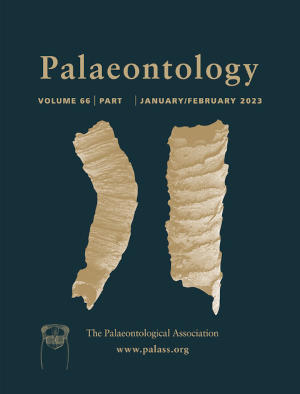Article: Developmental models shed light on the earliest dental tissues, using Astraspis as an example
Publication: Palaeontology
Volume:
66
Part:
6
Publication Date:
2023
Article number:
e12682
Author(s):
Guillaume Houée, Jérémie Bardin, Damien Germain, Philippe Janvier, and Nicolas Goudemand
Abstract
Abstract Fossils of extinct jawless vertebrates are pivotal to deciphering the evolutionary paths that led to the various forms of the vertebrate skeleton. For example, Pteraspidomorphs (stem-gnathostomes), such as the Ordovician Astraspis, display some of the oldest remains of bony and ‘dental’ (dentine and enameloid) tissues. However, the identification of the very nature of these early mineralized tissues has been hampered by a lack of unambiguous diagnostic characters. As development is key to identifying the derivation of these tissues, we developed an integrative and generic histogenetic model, testing several ontogenetic scenarios. We illustrate our approach on the basis of the well-preserved Astraspis samples and show how this can be used to infer key developmental features from extinct species. This study suggests that in the odontodes of Astraspis: (1) the initial curvature of the epithelium was close to the shape of the final external surface; (2) the mesenchymal cells differentiate synchronously in the whole inner periphery; and (3) the capping tissue was produced by both mesenchymal and epithelial cells (enameloid rather than enamel). Astraspis specimens also provide evidence of a dual growth periodicity, possibly homologous to Andresen and von Ebner growth lines observed in amniotes, suggesting this type of dual periodicity may be shared by most vertebrates. We estimated that an Astraspis odontode grew up in around 60–70 days at a rate of 0.5–5 μm/day. The new developmental approach proposed in this study could be a robust framework for critically evaluating the tissues of extinct taxa in the future.
